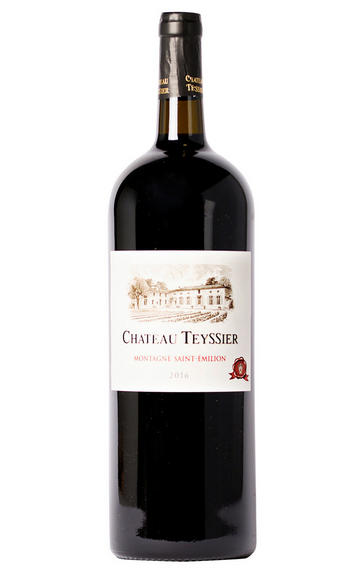
2018 Château Teyssier, Montagne-St Emilion, Bordeaux
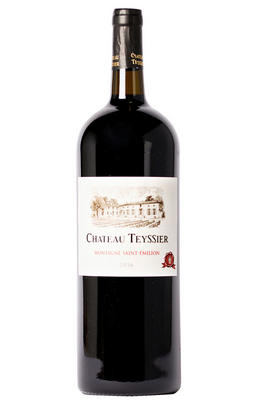
Critics reviews
The 2018 Teyssier is a terrific and accessible Saint-Émilion from Jonathan Maltus. Crushed red berry fruit, spice, new oak, chocolate and floral notes flesh out in an attractive, supple 2018 that will drink well right out of the gate. The radiance of the year comes through nicely, with all of the elements deftly balanced.
Drink 2023 - 2030
Antonio Galloni, Vinous.com (March 2021)
The 2018 Teyssier is composed of 70% Merlot and 30% Cabernet Franc, with a 3.53 pH and 14.8% alcohol.
Medium to deep garnet-purple in color, it comes skipping out of the glass with bright, open, carefree scents of stewed red and black plums, Morello cherries and fruitcake, plus hints of Chinese five spice, bay leaves and dusty soil. Medium to full-bodied, the palate is coated with spicy red and black fruits, supported by chewy tannins and just enough freshness, finishing with an herbal lift.
Teyssier is from the JCP Maltus portfolio of skillfully crafted Saint-Émilion wines. Neil White is the head winemaker, and Thomas Duclos is a consultant here.
Drink 2022 - 2030
Lisa Perrotti-Brown, Wine Advocate (March 2021)
Currant, dried-flower, citrus-zest and sandalwood aromas, with hints of sliced mushrooms. It’s medium-to full-bodied with firm, powdery tannins and fresh acidity. Fragrant, pretty and precise. Really fine.
Try from 2024
James Suckling, JamesSuckling.com (March 2021)
What can be thought of as the entry-level Cuvée from Teyssier, the 2018 Château Teyssier is a sleeper in the vintage, offering a great perfume of blueberries, wildflowers, candied orange, and Asian spices, with a touch of chalky minerality on the finish. Rich, medium to full-bodied, and beautifully textured on the palate, it's a gorgeous, already impossible-to-resist Saint-Emilion to enjoy over the coming decade. It's the finest vintage I've tasted for this release.
Drink 2021 - 2031
Jeb Dunnuck, JebDunnuck.com (March 2021)
About this WINE
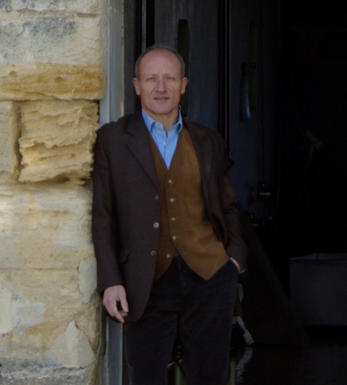
Ch. Teyssier
Vines have been cultivated at Teyssier in the St Emilion satellite AOC of Montagne-St-Emilion since the 15th century. Today there are 50ha of vineyard surrounding a charming 18th-Century Chartreuse.
Antoine Darquey is the fourth generation of his family to take the reins at the property, arriving in 1993 when the estate was in perilous condition. Since 2008 he has been joined by his cousin Thomas Durand Teyssier who took on the role of technical director.
Teyssier’s terroir is very similar to that found in St Emilion itself, with rolling slopes of clay and limestone. Vineyards are planted with 90% merlot and 10% Cabernet Franc. The proportion of Cabernet Franc will be increased to 15% by the 2025 vintage as they value its elegance and contribution to complexity in the blend.
Initially working with renowned consultant Michel Rolland, they have invested and finessed their approach to deliver increasing success. Since 2014 Stephane Dereroncourt has taken over from Michel continuing the drive for quality and a move towards organic viticulture with HVE-3 certification (environmental farming).
Thomas vinifies parcel by parcel, taking account of soil type and age of vines. When it comes to the blending this ensures the flexibility to make the best wine they can. New oak is used modestly and judiciously, the objective being to show off the quality of the fruit rather than expensive casks.
These are excellent quality, great value wines with soul which put many similarly priced wines from neighbouring St. Emilion firmly in the shade.
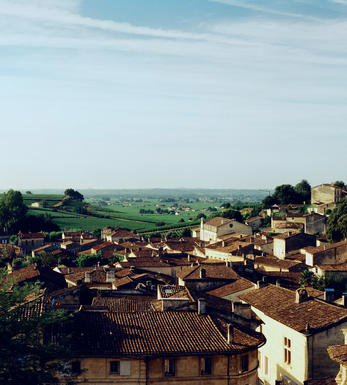
Montagne-St-Emilion
Montagne-St Emilion is a red-wine appellation on the Right Bank of Bordeaux.
It is the largest of St Emilion’s so-called “satellite” appellations, the others being Lussac, Puisseguin and St Georges. The commune sits to the north of St Emilion proper; the vineyards of Pomerol lie to the west.
Among the leading producers here are Vieux Château Saint André – the home estate of the Berrouet family, best known for making the wine at Petrus – and Château Teyssier, led by straight-talking Antoine Darquey.
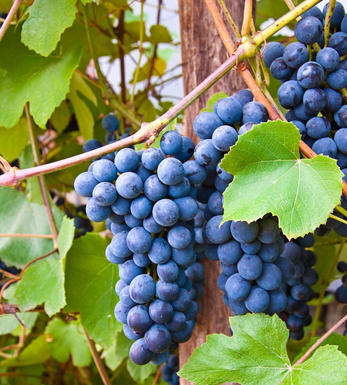
Merlot/Cabernet Franc
Merlot and Cabernet Franc are grape varieties commonly used in Bordeaux-style blends, particularly in the Bordeaux region of France. When these two grapes are blended, they can create a wine that combines the best characteristics of each variety.
Merlot is known for its smoothness, soft tannins, and ripe fruit flavours. It often contributes black cherry, plum, and chocolate flavours to the blend. The grapes are relatively easy to grow and ripen earlier than other Bordeaux varieties, making them versatile for blending.
Cabernet Franc, on the other hand, adds structure, depth, and complexity to the blend. It typically brings aromas of red fruits such as raspberry and strawberry, along with herbal notes like bell pepper and tobacco. These grapes have thinner skins and can be more challenging to cultivate, requiring specific growing conditions to reach their full potential.
When Merlot and Cabernet Franc are combined, the result is a well-balanced wine with various flavours and aromas. The blend often exhibits a Bordeaux wine's medium to full body, along with a smooth texture and moderate tannins. The specific flavour profile can vary depending on the proportions of each grape in the blend and the terroir and winemaking techniques employed.


Buying options
Add to wishlist
Description
What can be thought of as the entry-level Cuvée from Teyssier, the 2018 Château Teyssier is a sleeper in the vintage, offering a great perfume of blueberries, wildflowers, candied orange, and Asian spices, with a touch of chalky minerality on the finish. Rich, medium to full-bodied, and beautifully textured on the palate, it's a gorgeous, already impossible-to-resist Saint-Emilion to enjoy over the coming decade. It's the finest vintage I've tasted for this release.
Drink 2021 - 2031
Jeb Dunnuck, JebDunnuck.com (March 2021)
wine at a glance
Delivery and quality guarantee